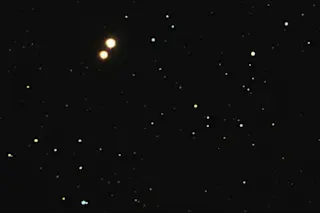The binary star system, Cygni 61, is seen here in the upper left portion of the image. Friedrich Bessel in 1838 measured the system's distance from Earth at About 10.4 light years, which was very close to the actual distance of about 11.4 light years. It was the first distance estimate for any star other than the sun. It was also the first hard evidence of the trigonometric parallax. (Credit: Pepe Manteca/Flickr) Well, here we are two weeks into the era of gravitational wave astronomy. I trust that by now you have read and heard all about the LIGO discovery of gravitational waves from two black holes merging and what it means for astronomy. These are indeed exciting times and it is worth pausing to think about this announcement in the context of other big astronomical discoveries that were generations in the making. Perhaps the best historical analog for the ...
The Other Astronomical Breakthrough That Took 100 Years to Achieve
Explore the impact of the LIGO discovery of gravitational waves, marking a new era in gravitational wave astronomy.
More on Discover
Stay Curious
SubscribeTo The Magazine
Save up to 40% off the cover price when you subscribe to Discover magazine.
Subscribe













